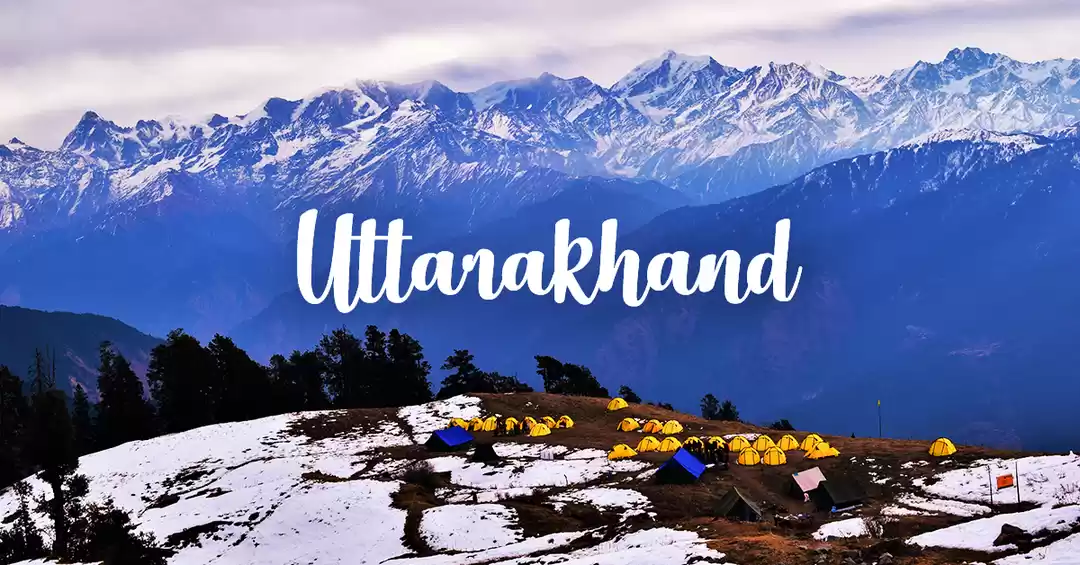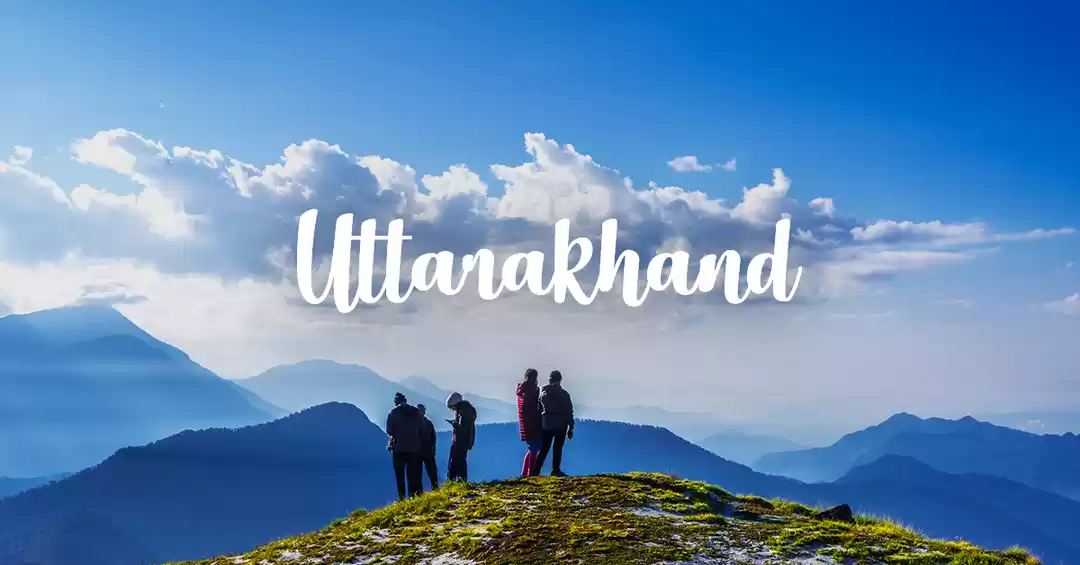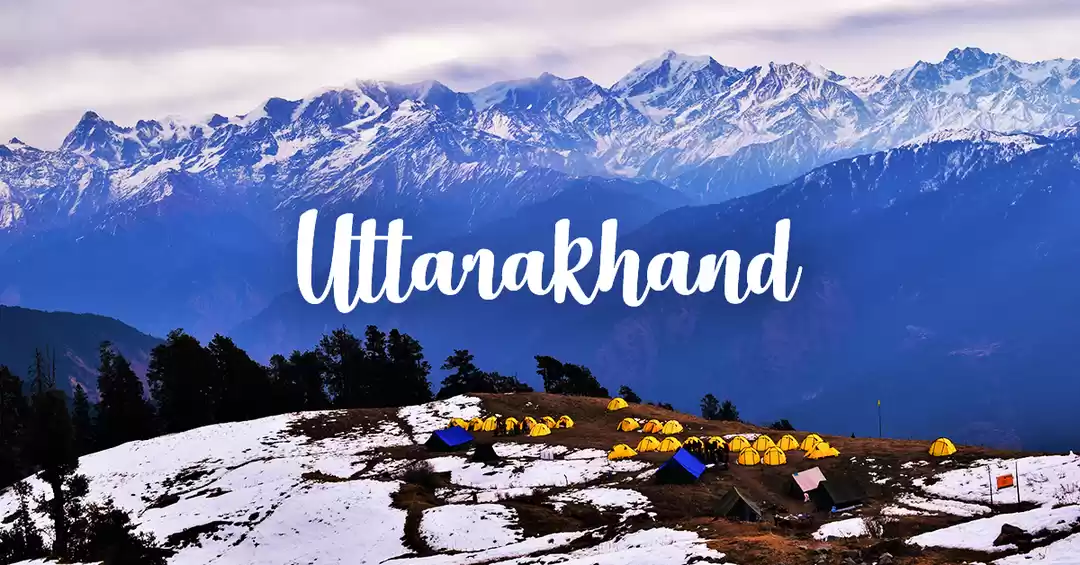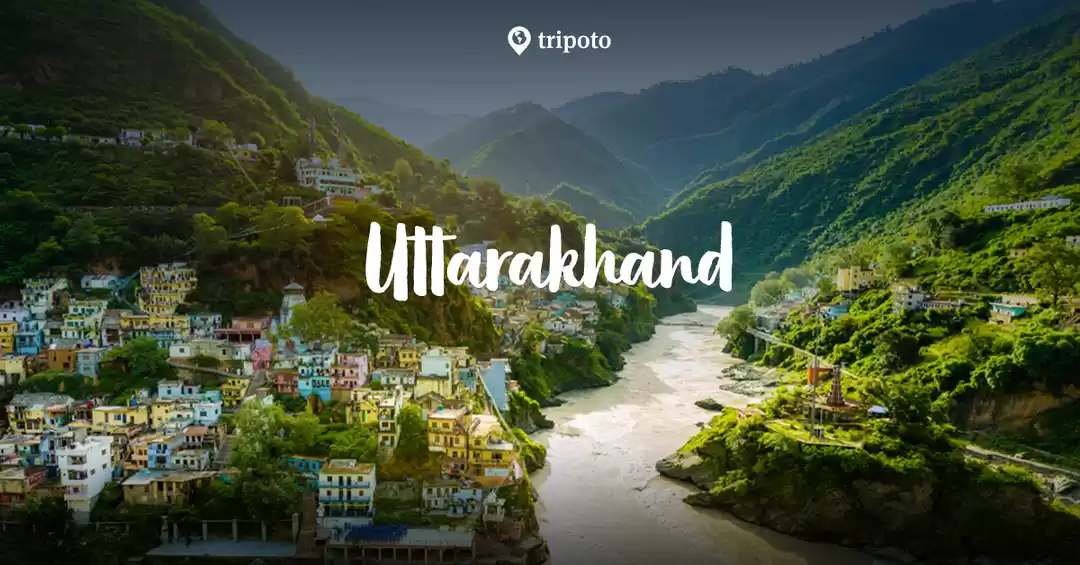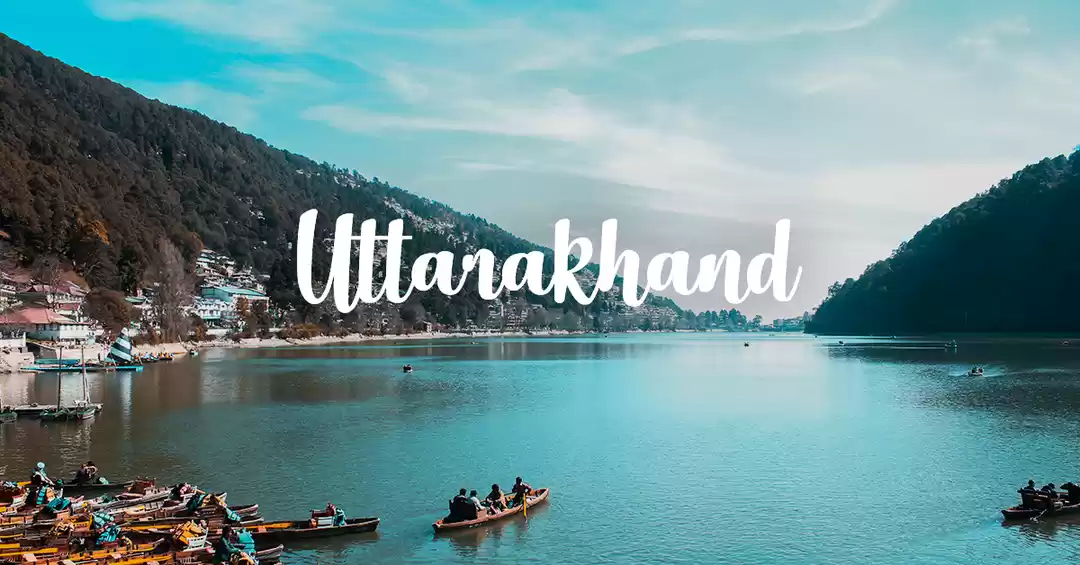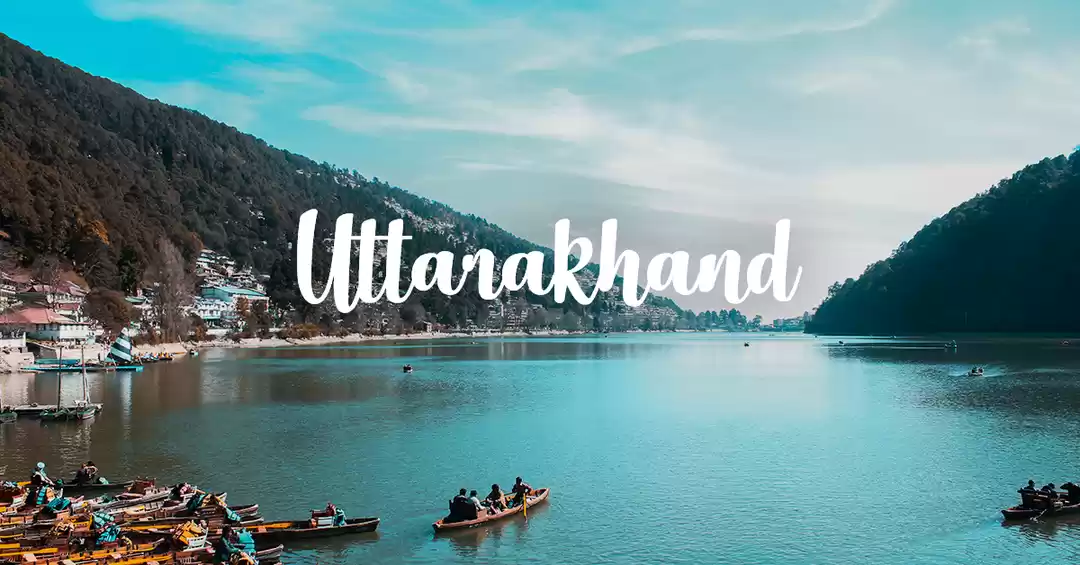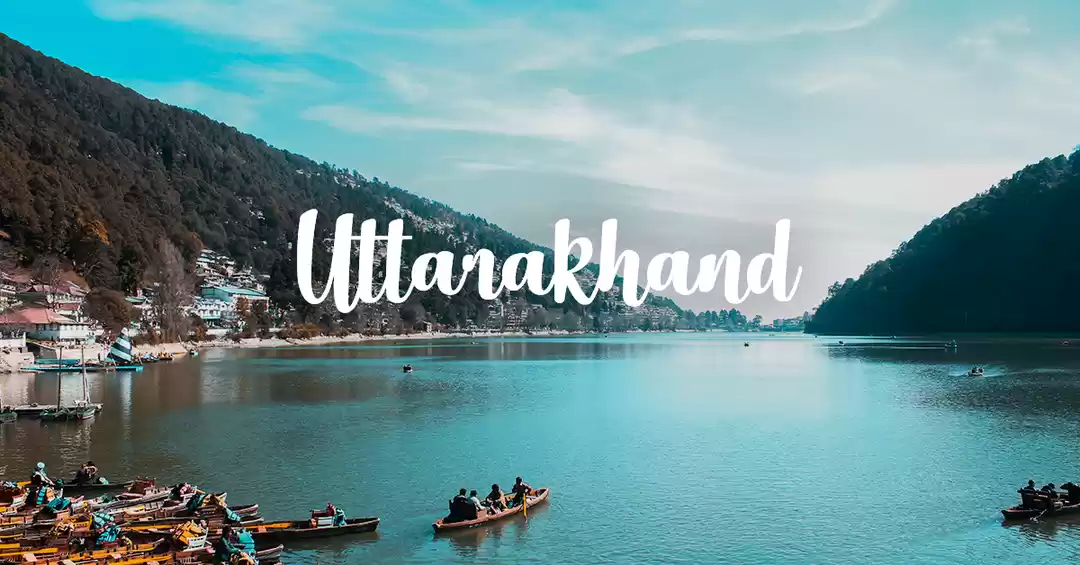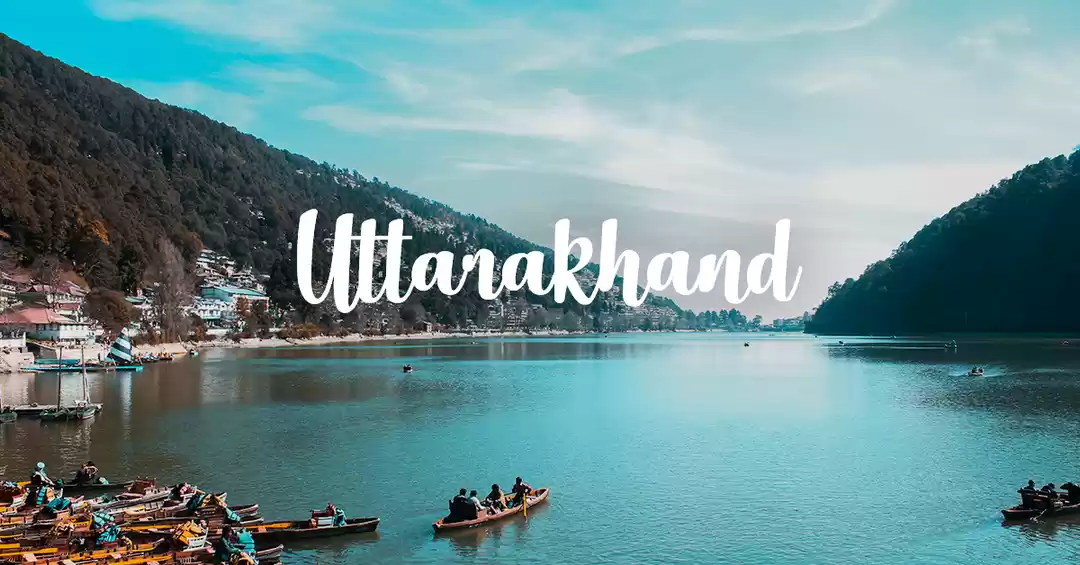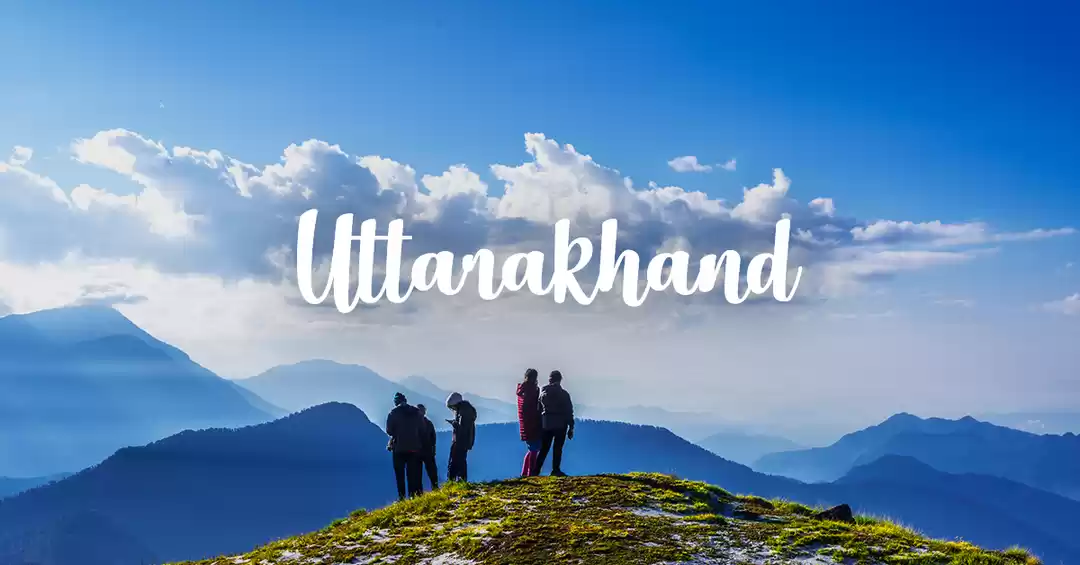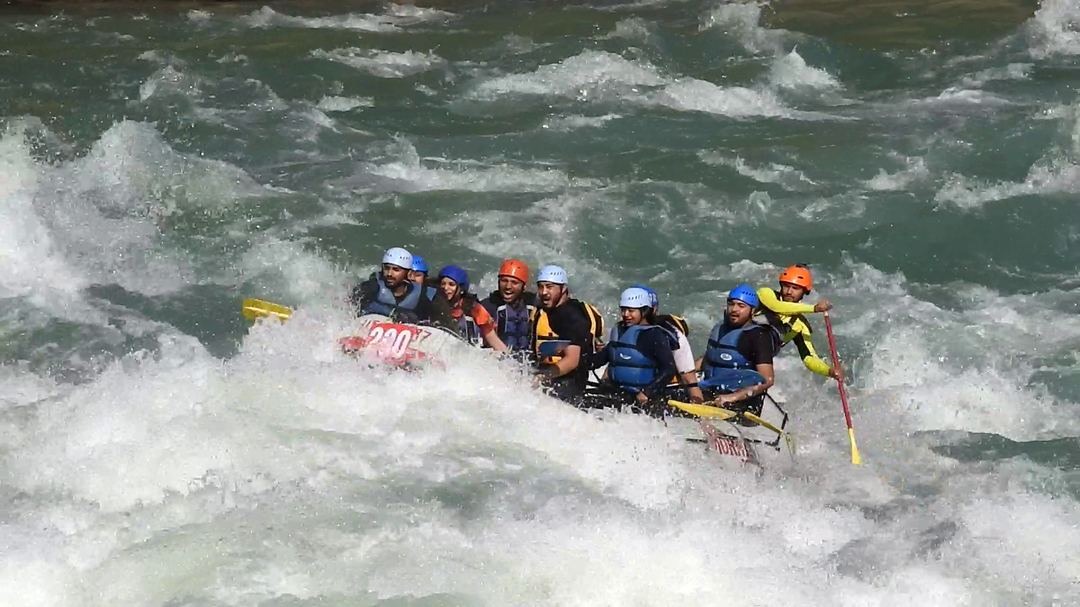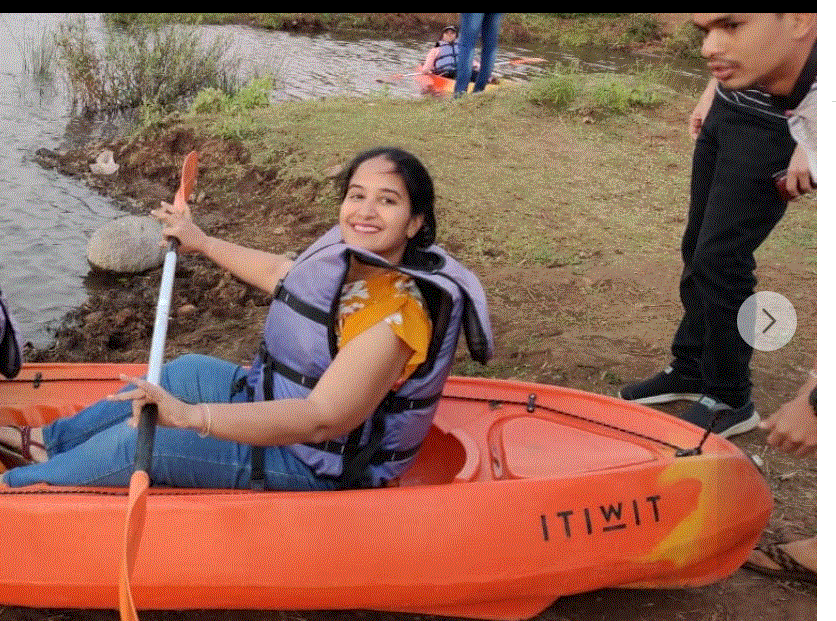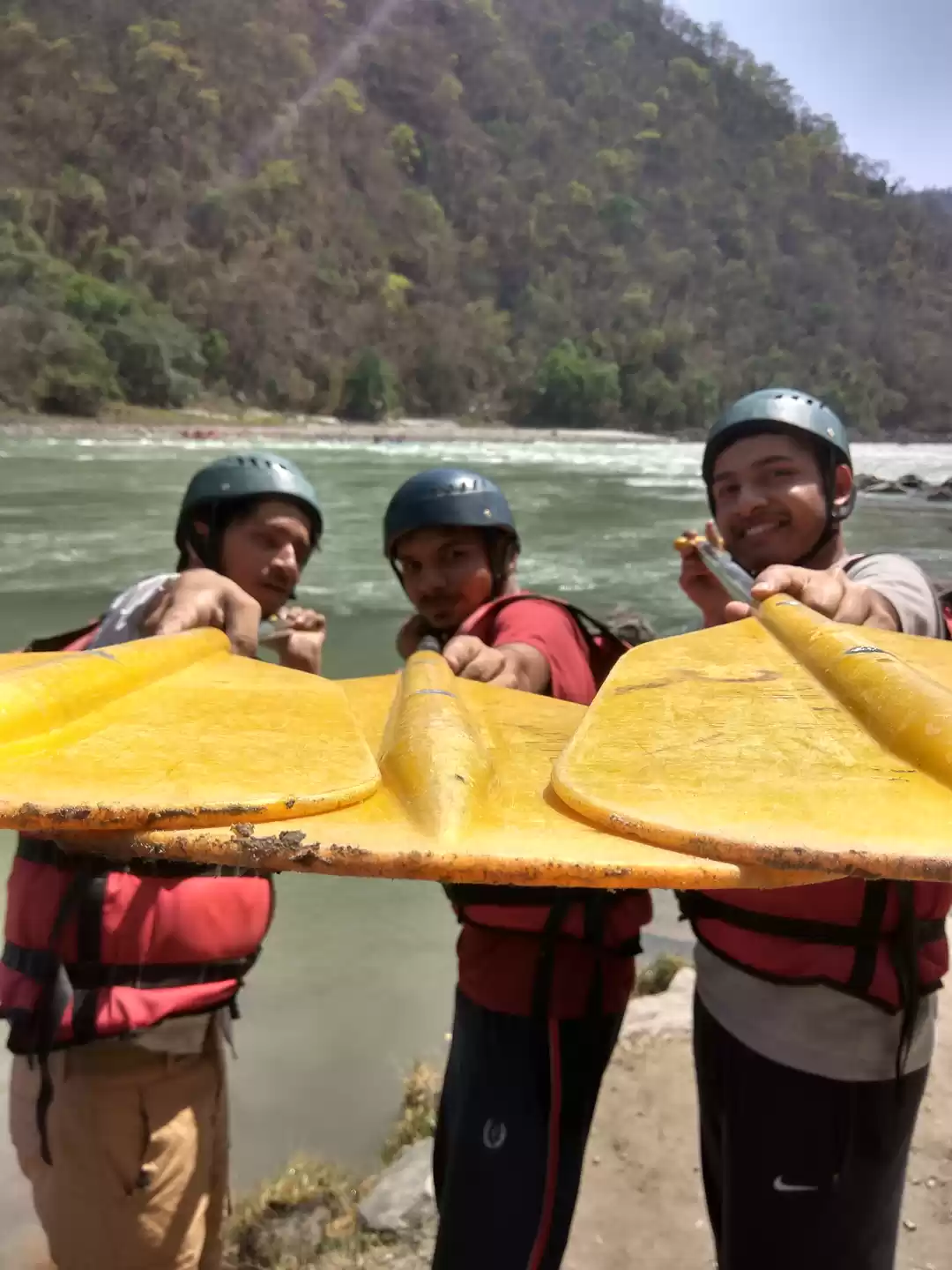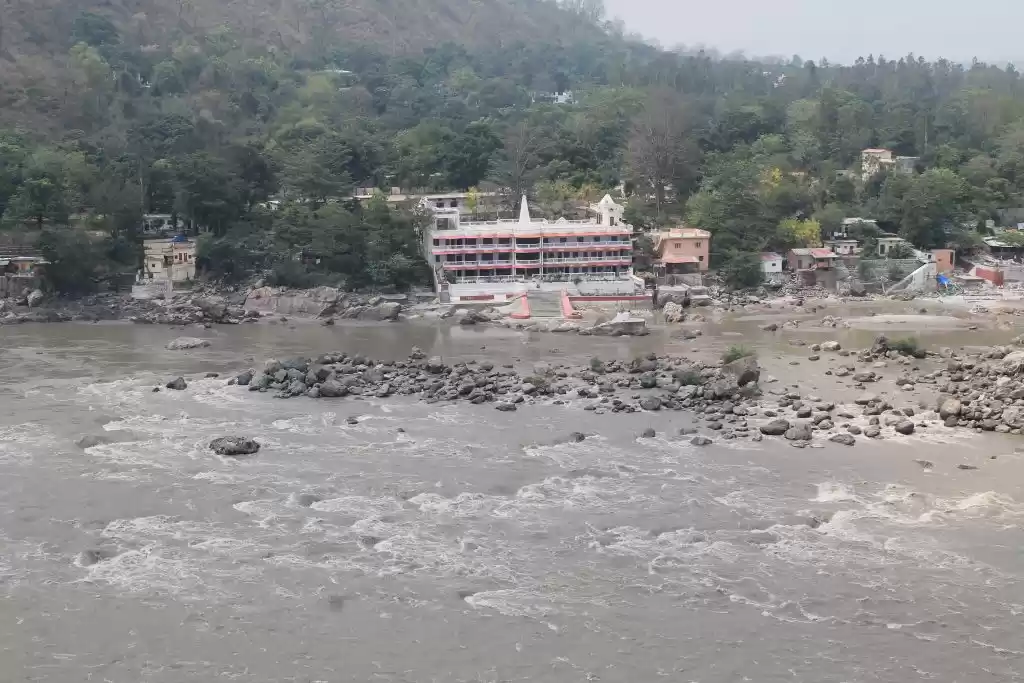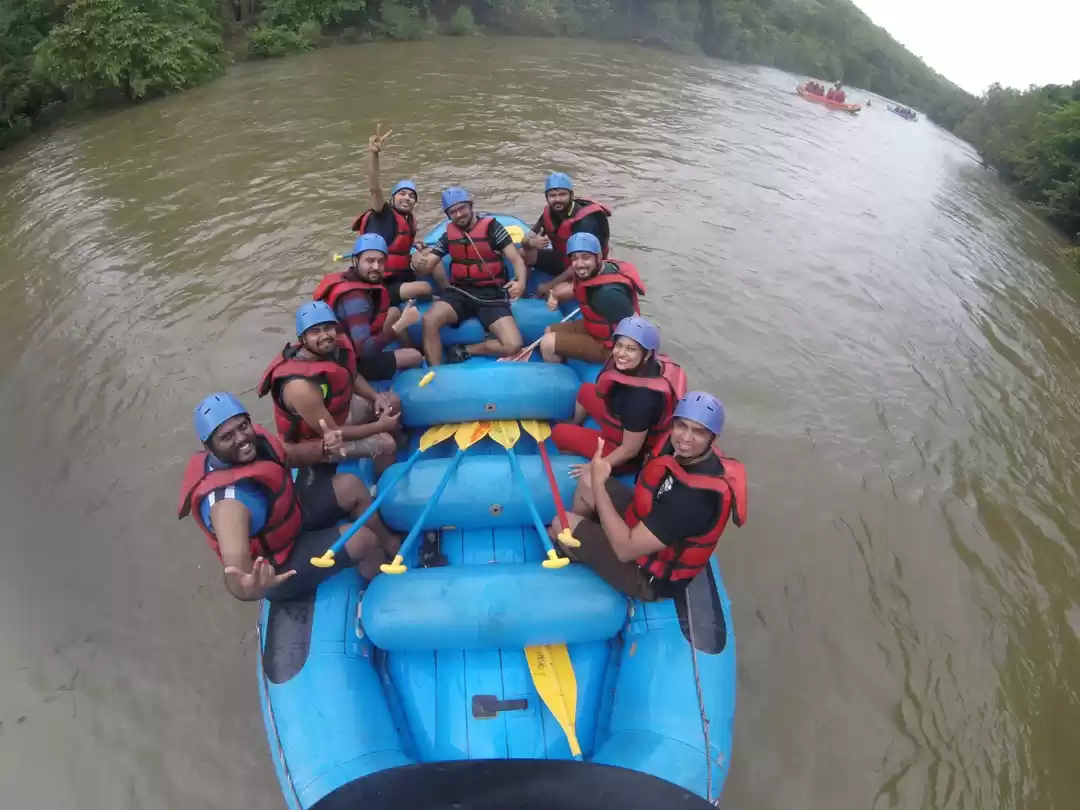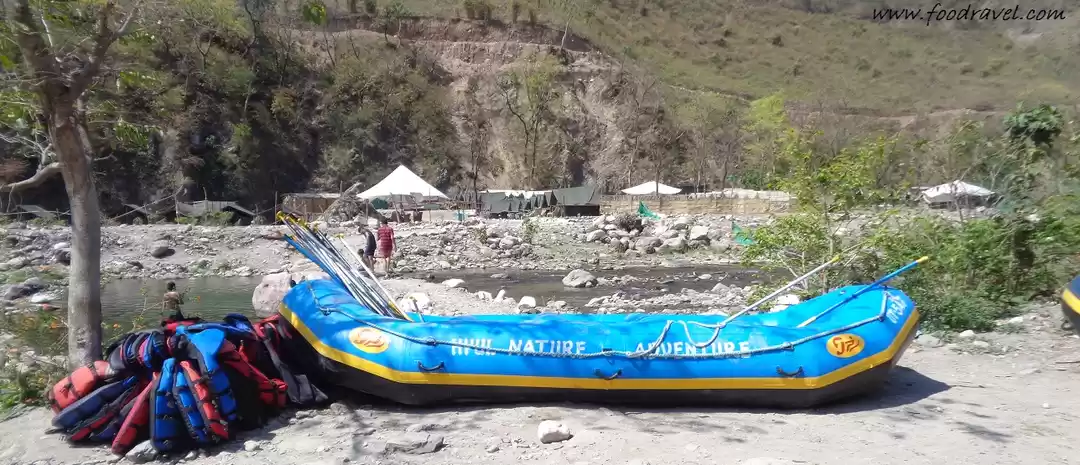When we think of white-water rafting in India, usually we tend to think of the Himalayan rapids in Rishikesh. However, during my second visit to Kerala, I was pleased to discover white-water rafting on the Tejaswini river, which runs through the Kannur district in Kerala. The river flows from the hills in the Western Ghats, and this is what makes it so ideal for rafting. This river is particularly clean and untarnished, without many tourists.
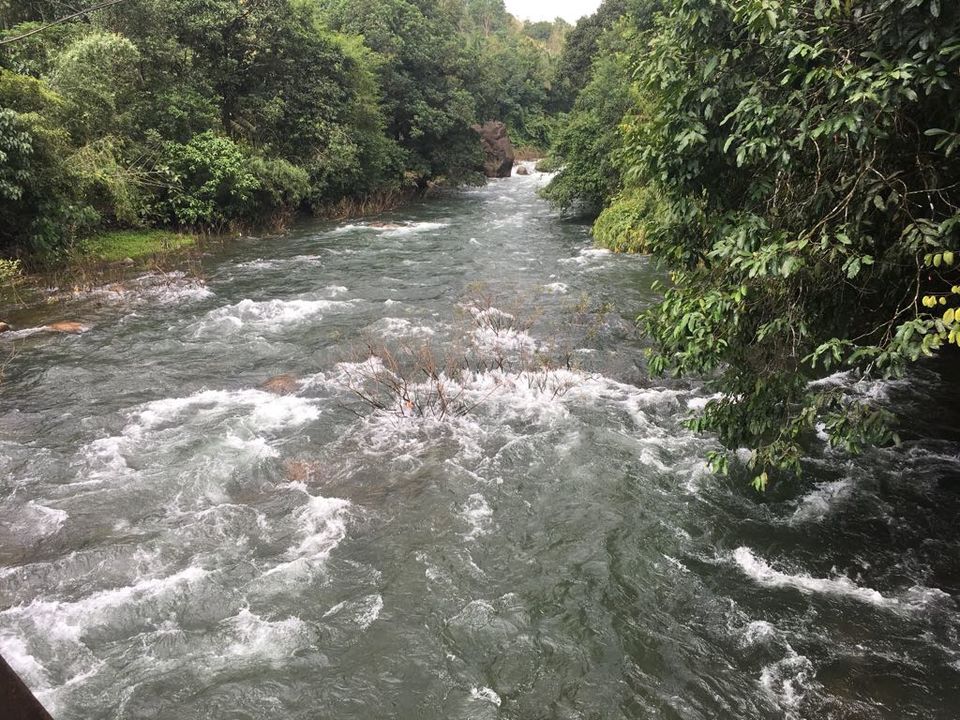
Usually, I’m terrified of adventure sports, and I had never gone rafting before. Falling into the river and never being found again wasn’t really my idea of fun. However, this time, my husband and his cousins managed to coax me into going rafting. The rafting here is organized by a company called Xtreme Adventures, and they turned out to be very professional, which helped allay most of my fears.
Preparing for the journey.
There were four of us and initially, we were worried that we needed more people, but it turns out that one raft can accommodate 4-8 people. Rafting requires a fair bit of effort from everyone on the raft, and we were required to learn specific rowing techniques before starting off. A guide comes along on each raft, and shouts out instructions such as “forward”, “backward”, “right forward”, “left back” etc. and everyone is required to change their rowing techniques to accommodate the flow of the river.
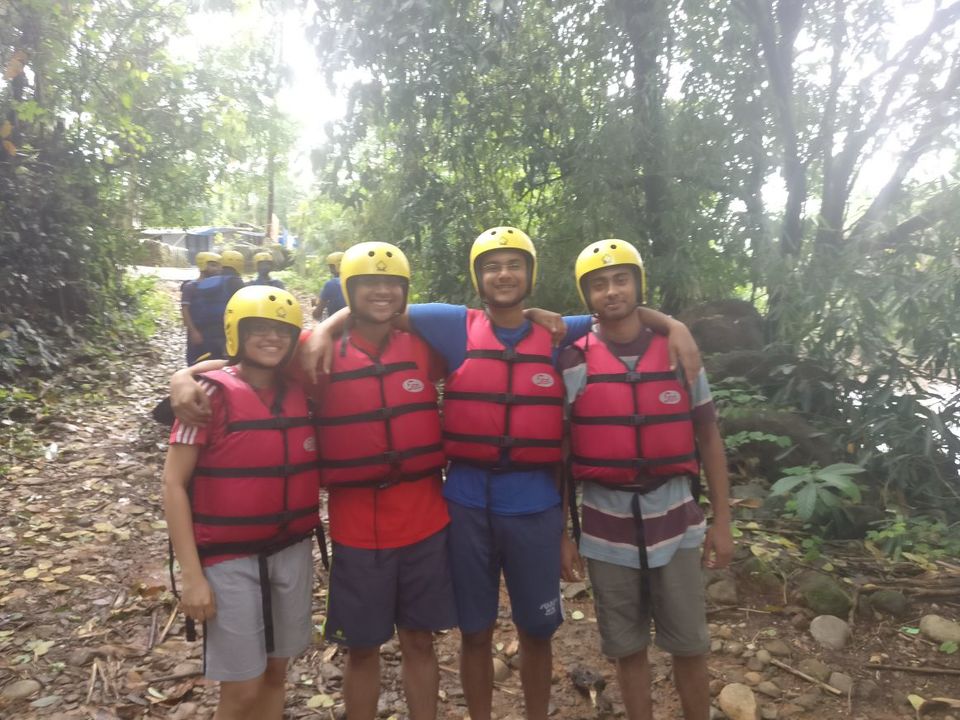
Before starting, we all practiced our moves for a while, and after that we put on our helmets and life-jackets. We were required to sit on the edges of the rafts, and insert out foots into the seats in front of us and behind us so that we were secure. We also had to hold on to the ropes on the sides of the raft for dear life, whenever we weren’t rowing.
The journey
Once we were ready, we finally clambered into the boat, and set off. Initially, I was terrified whenever the boat moved up and down, but soon I got used to the motion and started enjoying myself. The total duration of the journey is for 1.5 hours and we were going to cover about 10 km in distance.
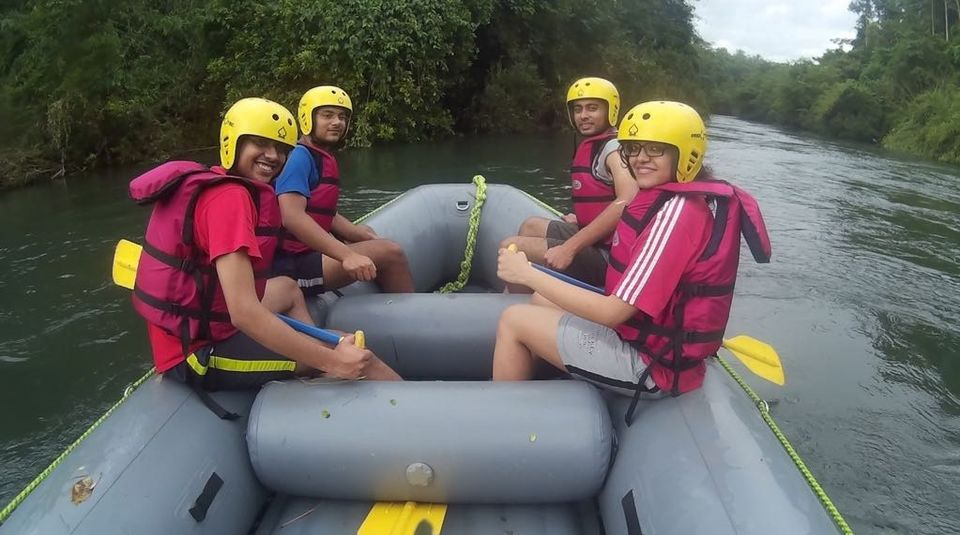
Most parts of the river were quite mild, and the raft gently moved forward. However, there were some rapids and whirlpools into which we fell in and during those time, we really thought we would fall into the river. The river has dense forests and mangroves on either side, and it was a beautiful view as we drifted along. The hills could also be seen in the distance, looming over us.
Occasionally, we would hit mangroves along the river banks, and a shower of spiders would fall into the raft. I’m terrified of all spiders, and these were particularly big ones. However, after a while it became quite funny, as we tried to throw these overboard, and I think it helped me get over my fear of spiders a little.
Swimming in the river
After a while, the guide said that we would be swimming in the river. I went, “What!”
He repeated, “Yes, you all can now get down into the river.”
I asked him, “Do we have to get down, or only if we want to?”
Thankfully, it was optional and I immediately thought I would wait in the raft, while the others got down into the river. However, once I saw the others in the river, I also mustered up some courage, and jumped into the river. Because, of the life-jackets, we just floated and slowly drifted along with the river. It was truly amazing, and probably the best part of the entire affair. After a while, the current sped up again, and we clambered back into the raft.
Finally, we reached our destination, and though we were all drenched and covered in dirt, we were all elated. It had been a great experience. So much so, that I wanted to go rafting again! Our guide was super helpful too, and that added to the experience. It’s very important to have a guide who understands the group well.
Rafting Dos and Don’ts
Even if you’re not planning to go rafting in Kerala, following are some useful tips for whenever you do happen to go rafting, and in whichever part of the world.
1. Listen to the guide very carefully before you start rafting, or else you’ll be in deep waters once you start the journey (pun not intended).
2. Remember to hold on to the ropes at the edge of the raft when you are not rowing. Often, we were forgetting to do this. You can very easily topple over if you’re not holding on to the ropes.
3. Make sure that your life-jackets and helmets are fitting. Helmets can very easily fall off if you’re traversing a particularly rough patch of the river.
4. Wear slippers, as you’re going to get completely drenched. Also, wear comfortable clothes.
5. Don’t wear any jewelry or other accessories. If you have spectacles, make sure they are tightly bound behind your head with a string, or else ensure that your helmet sits tightly on your head.
6. Don’t stand up on the raft – this can make the raft capsize. I did this once, when spiders fell into the raft. Well, spiders hopefully won’t kill you, but falling into the river might.
7. Look out for stray branches and trees and remember to put your head down when you see these. Or else, these can knock you out (literally).
8. It’s important to synchronize the rowing. Ensure that you’re in sync and start at the same time as others on the raft.
9. Rowing is hard work. Don’t just skim the surface of the water, or else you’ll have trouble changing directions when you need to row against the current.
10. Don’t be scared, and enjoy the experience. Remember, even if you fall into the water, the life-jacket and helmet is there to ensure you float and protect your head.
I was super happy to come across this hidden gem in Kerala. Remember that only when you travel, will you come across new and unique experiences. If I can muster up the courage to go rafting, then anyone can! To read more about my travels, check out my blog here



